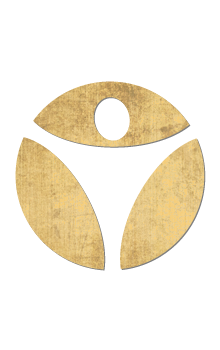What is the Best Thickness for a Yoga Mat?
- Updated on: October 13, 2021

The Thickness of Your Yoga Mat
What is the best thickness for a yoga mat? Did you know that the thickness of your mat really does make a difference? Many people will simply go to the store and pick a mat that looks pretty or order the coolest looking one online. Others will try to find the cheapest possible mat when they are just starting their practice. The issue is that many of these mats might look nice or be cheaper, but they might not necessarily offer you the proper support that you need to have your yoga practice.
Now, the perfect mat might be a little bit different from person to person, but some mats in general simply offer better support than others.
Best Thickness for a Yoga Mat
When looking for a new yoga mat, there are a few things to take into consideration:
1. Type of Practice- Depending on what kind of yoga you are practicing can change the type of mat you are looking for. If you are going to be on the mat for the majority of class, such as if you are practicing restorative or yin yoga, you might be looking for a mat that has more thickness to keep you from feeling the ground beneath you. If you are moving more during class, certain mats that are too thick might not have enough grip. These are just some examples of how the types of class can change what mat you might be looking for.
2. Injuries- If you have any injuries that you are healing from, you might be looking for a mat with more thickness to better cushion sore areas of the body. For example, if you have a knee that gets sore easily, you won’t want to put much pressure on it. Feeling the hard ground against that knee would not be comfortable. In this situation, you would want a thicker mat to protect you from feeling the ground. Just like with any yoga practice, injuries should always be taken into account ahead of time to ensure the best possible practice for you. This is the same for your mat.
3. Home Practice Versus Studio- Where you are practicing is also something to take into consideration. If you are practicing at home, it is easier to have a thicker mat that you can just grab and unroll. However, when practicing in a studio, there is more traveling involved, and thicker mats are often heavier. In this situation, if you do not want to have to carry a heavy mat around, you might be looking for a mat that is a little bit less thick so that it is lighter. Lighter mats are easier to travel with. There are many travel mats out there, but you will want to take into consideration whether or not they will offer you proper support when you get to your class. You might not want the heaviest mat, but if you get one that is too thin, it will come with complications as well.
4. The Floor Material- Think about the floor where you will be practicing. Are you practicing at home, and if, so where in your house are you practicing? Are you practicing on the hardwood or on a carpet? If you often practice at the same studio each time, think about their flooring. Is it hardwood? Is it made of padding? Is the floor you are practicing on hard or soft? This can make a huge difference for what kind of mat you will need. A harder floor that is more slippery will need a mat with more thickness to protect from the feeling of the ground and also one that has a good grip so it won’t slip. If you have to constantly adjust your mat to keep it from slipping, this will take away from the practice.
Practicing on a carpet will mean that you won’t need a mat that is quite as thick, but it will be harder to keep your mat in place as well. Carpets can also cause your mat to slip. Know your floors and determine what you need from there.

What are the Benefits of a Yoga Mat with Extra Thickness?
Why is it important to have a thicker mat? What benefits does it offer?
A yoga mat with extra thickness will help to cushion you and keep you from feeling the ground beneath the mat. In addition, thinner yoga mats typically slide more and are harder to work with in the long run. For those with a regular practice, a thinner mat is often not a great idea.
When looking for a mat, you will want to find one with just the right amount of thickness. A thicker mat will be more gentle on the joints, especially during a practice where you spend a lot of time on the mat. For those with injuries, a thicker mat will help to cushion sore areas so that you are not putting a ton of pressure on them. In addition, thicker mats are better for when you are lying down at the end of the practice. Many classes end with a meditation where you are laying on your mat, and you can imagine that a thin mat wouldn’t be very comfortable to lay on for a long period of time. You’d be able to feel the floor beneath you and this is much tougher on the joints.
Can a Yoga Mat be too Thick?
This brings us to the question, can a yoga mat be too thick? The answer is actually yes. A yoga mat that is too thick can come with some unwanted problems. When your mat is too thick, it can actually be harder to work with. Too much padding can make it easier to slip if the mat does not have a good grip. This can affect your balance which is essential to a yoga practice. This can negatively affect your practice, and that completely defeats the point of having a good yoga mat.
In addition, mats that are extra thick can be harder to unroll. Imagine if you got to a class and laid out your mat only to have the edges keep rolling back up. This can be due to the thickness and material of the mat. Certain materials hold their shape too much, making it so that the mat will never unroll just right. It would be frustrating to have to spend the beginning of each class constantly unrolling the edge of your mat and trying to flatten it down. This issue can also be due to the material of the mat.
What if a Yoga Mat is too Thin?
A mat that is too thin can be hard on the joints, especially for those with injuries. If a mat is too thin, your ankles, knees, wrists, and elbows will definitely feel that difference. Many classes take place in a studio with a hard floor, and if you have a mat that is too thin to the point where you can feel the floor beneath you, this will negatively impact your practice and make your body feel sore. Many thin mats also tend to slide on a hardwood floor and don’t offer that great of a grip. Grip is very important during a yoga class to help with balance and stability. If you are sliding and adjusting your mat the whole practice, this will make your class much less enjoyable.
Imagine taking a class and coming into a pose on the hands and knees. A thin mat would put pressure on the knees and into the wrists. Think about how uncomfortable that would be each time you came into a pose on the mat and how much strain the joints would be taking. That would definitely take the relaxation out of the practice and keep you focused on discomfort.
How Thick Should Your Mat Be?
So, knowing that a mat can be too thick or too thin, is there a specific thickness that is best? We personally recommend having a mat around 6.6 mm. This allows the mat to have just the right amount of cushion without losing its grip. For those with a regular yoga practice that involves both standing and sitting on the mat, this is most likely the best thickness for a mat. Any thinner can hurt the joints and any thicker will not only make it hard to balance, especially for beginners, but it will put extra strain on the ankles as you try to find your stability.
This is why it is so important to understand what goes into a mat before just buying one. Many people will simply pick the coolest looking mat or the cheapest one. The problem is that many of these mats are designed to look nice or to be as cheap as possible, but they might not offer the support needed for a good, safe yoga class. The point of a yoga mat is to assist your practice, not to make it harder. If you pick the first mat you see, you might be choosing one that does not actually suit your needs or help your practice the way that it should be.
Is the Material of Your Yoga Mat Important?
Looking past thickness for a moment, is the material of your mat important too? The material of your yoga mat can affect your practice. It’s important to take material into account. Thickness levels will feel different with each material. For example, if you were using a mat made of TPE (Thermoplastic Elastomers), it might feel thicker than one made of rubber but it might not be as easy to work with. Rubber tends to have a better grip as well, so with the same thickness as TPE, rubber would probably still be a better option if you are looking to have assistance with balance. Let’s say that you have a mat made of NBR (Nitrile butadiene rubber). This synthetic rubber will not have nearly as good of a grip and is much harder to roll out completely. This mat will feel like it has more of a cushion but no grip. This is why, despite how thick a mat is, material should always be taken into account too.
We believe that cork is the best material for a yoga mat. In fact, our mats are made out of a combination of sustainable cork and rubber.

How We Engineered a Yoga Mat with the Perfect Amount of Thickness
Did you know that we engineered our own yoga mat? We at Body By Yoga knew that having the right mat is essential to a good practice. Therefore, we decided to create our own mat that is sustainable, thick, and has a good grip.
So, how are our mats made, and what makes them different from other mats?
We used two different materials. The reason that we chose to do this is because we are aware that each material has different benefits. Our mats are made out of natural cork and rubber. Natural rubber is weighted, making it less likely to slip. Therefore, we decided to put it on the bottom of our mat. This makes it possible to grip the floor better, but if you chose to practice on carpet, the rubber would help to weigh the mat down and keep it in place. In addition, it creates more padding, making it better for sensitive knees. The rubber on the bottom of the mat will also help to keep it weighed down so that when you unroll it, it stays in place and holds the shape you want it to. Our rubber is made naturally in Vietnam and we use this instead of TPE. This avoids the sponginess that some mats can have. When a mat is too spongy, it is hard to balance.
The tops of our mats are made of natural, sustainable cork. Cork can be great for grip and padding, but the problem is that most cork yoga mats are put together in a way that makes them harder to use. If you have too little cork, it won’t offer much support. Too much cork would easily break and fall apart. We used the most amount of cork possible without it being too much.
Our yoga mat is made of premium Portuguese cork, and we have found a way to use six times more cork than any other mat, but we did so in a way that it would not easily break and fall apart. Our cork also offers a great grip that gets stickier the more you use it. When you sweat, the cork naturally becomes stickier, making it easier to use and to grip onto. The more you sweat, the better. Our mats are also extra large and wide, giving you more space to practice.
Most cork mats do not use very much cork at all. In fact, many only have a layer of cork that is as thin as sandpaper. Our mats have six times as much cork, but they hold their shape and do not break apart with use.
While the weight of a mat should be taken into account if you will be carrying it back and forth to class, the cork in our mats makes them just the right weight at 9.5 pounds. While this might be heavier than many “travel mats,” it is not too heavy that it is hard to carry, and it still provides you with great support during your practice.
Other Benefits of Our Mats
Our mats are actually sustainable and environmentally friendly.
What makes our mats so sustainable?
One of the coolest parts about our mats is that no trees are cut down to make them. Our cork comes from the bark of trees that is harvested without taking the whole tree. This bark will grow back over time, and the tree will keep living. The rubber for our mats is taken in a similar way to maple syrup. The trees are tapped to drain the liquid the rubber is made of from trees, and this also rejuvenates over time, as if we never touched it.
Our mats are made to serve everyone. Whether you are new to yoga or have been practicing for years, our mats can be a great option for you. The thickness and good grip also makes the mat useful for other exercises as well, such as pilates, ab exercises, or even aerobics. You can enjoy our mats with a more gentle practice or you can also use them with classes that require more movement.
Our mats are antimicrobial. What does this mean? The cork in our mats actually makes them easier to clean. Cork is non-porous (which is why it is used for wine-bottle stoppers). The reason this is useful for yoga mats is because it makes them easier to clean. Think about how much you sweat during a yoga class. Most mats will absorb sweat and make them harder to clean. Meanwhile, cork will not absorb sweat. Instead, the sweat will sit on top, making it easier to wipe down and disinfect after a class. Other mats will allow you to disinfect the surface, but the sweat and germs that absorb into the pores of the mat will stay there.

Why Our Mat is Great For All Practices
If you are practicing in a studio or using another avenue for your yoga classes, our mat can serve you at whatever level you need them to. If you are practicing a restorative class and spending the majority of time on the mat, you will enjoy the extra padding and non-slip grip. If you are practicing a vinyasa yoga class and constantly moving from pose to pose while linking to your breathing, our mats can help to give you more balance without slipping.
Many yoga classes out there involve holding standing poses and really using the muscles and balance. Imagine if your mat was too thin to support this, or so thick that it made it difficult to stand in one place. Students might feel like they are doing something wrong when in reality, it could very well be the mat they are using. If you feel your joints are sore or you just can not seem to find your balance during a practice, you might want to examine whether or not you have the right mat for you. If you find your mat is not what you want it to be, it might be time to start looking for a new one.
Most of our classes are made to be slow burn power yoga. This allows our practices to involve movement while not jumping from pose to pose, and it makes it so that you do not wind up holding poses for long periods of time. Our practices are great for people of all levels, increasing balance and flexibility. Due to the nature of our practices, our yoga mats are great for helping to work with your balance and keep you from falling as you hold a pose. No matter what you are looking for in a mat, we aim to help you wherever and however you need it.
Click here to check out our yoga mats and to learn more about what makes them awesome.
Body By Yoga offers practices for all levels and abilities so that you can find the best possible class for you! Want to try one of our yoga practices? Click here!
Recent Posts
Categories
Related Articles
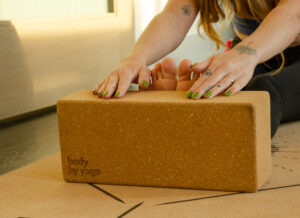
Benefits of yoga before bed
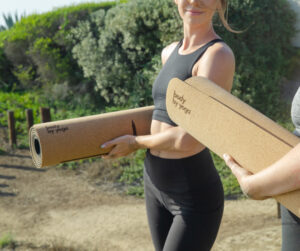
Other ways to stay involved

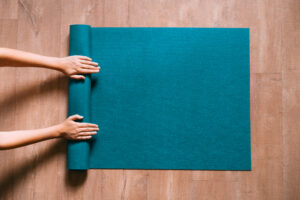
Best Mats for Yoga
Related Articles
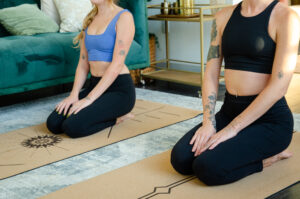
Breathing technique to improve your yoga practice
Your yoga practice can be whatever you need it to be. Yoga can be for energy and focus for your day, injury rehabilitation and prevention,

Other ways to stay involved
One of our favorite things about yoga is the community that’s behind it. We have tons of ways to be involved in our yoga community

Dynamic vs Static Stretching
Stretching is necessary in order to loosen joints, engage muscle groups, prevent injuries and help your body relax, but did you know there’s more than
